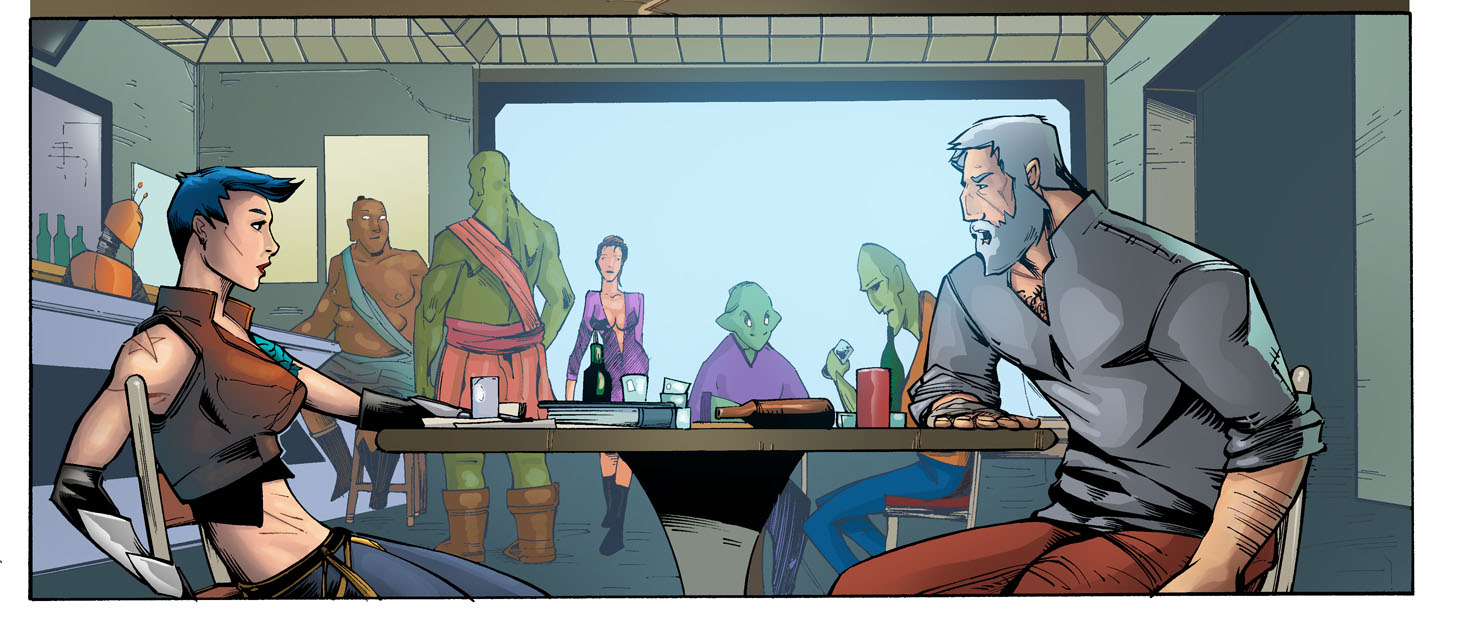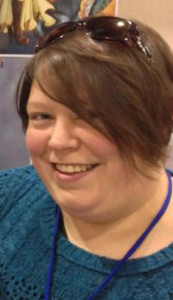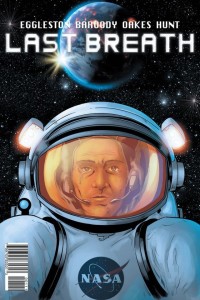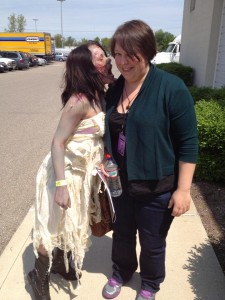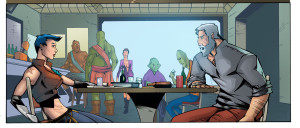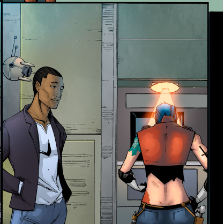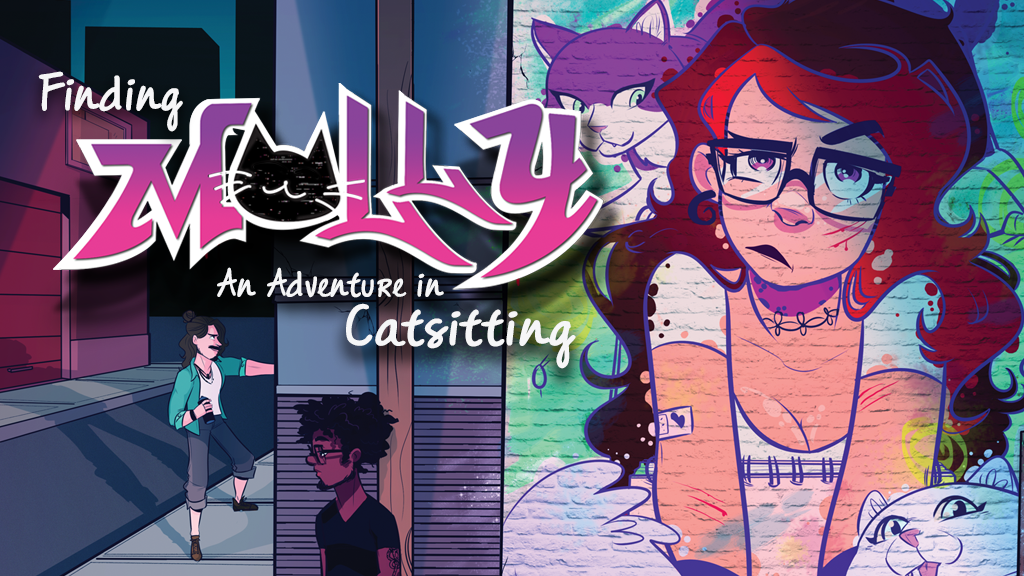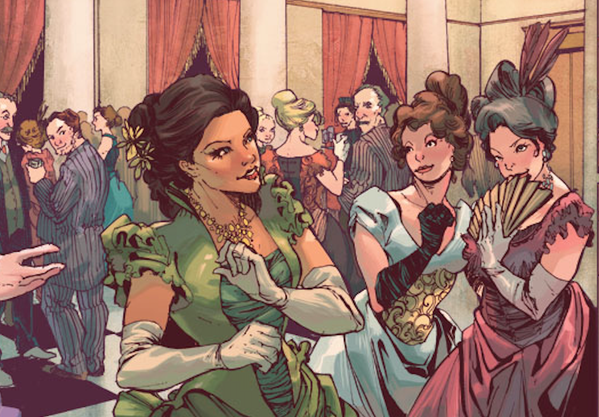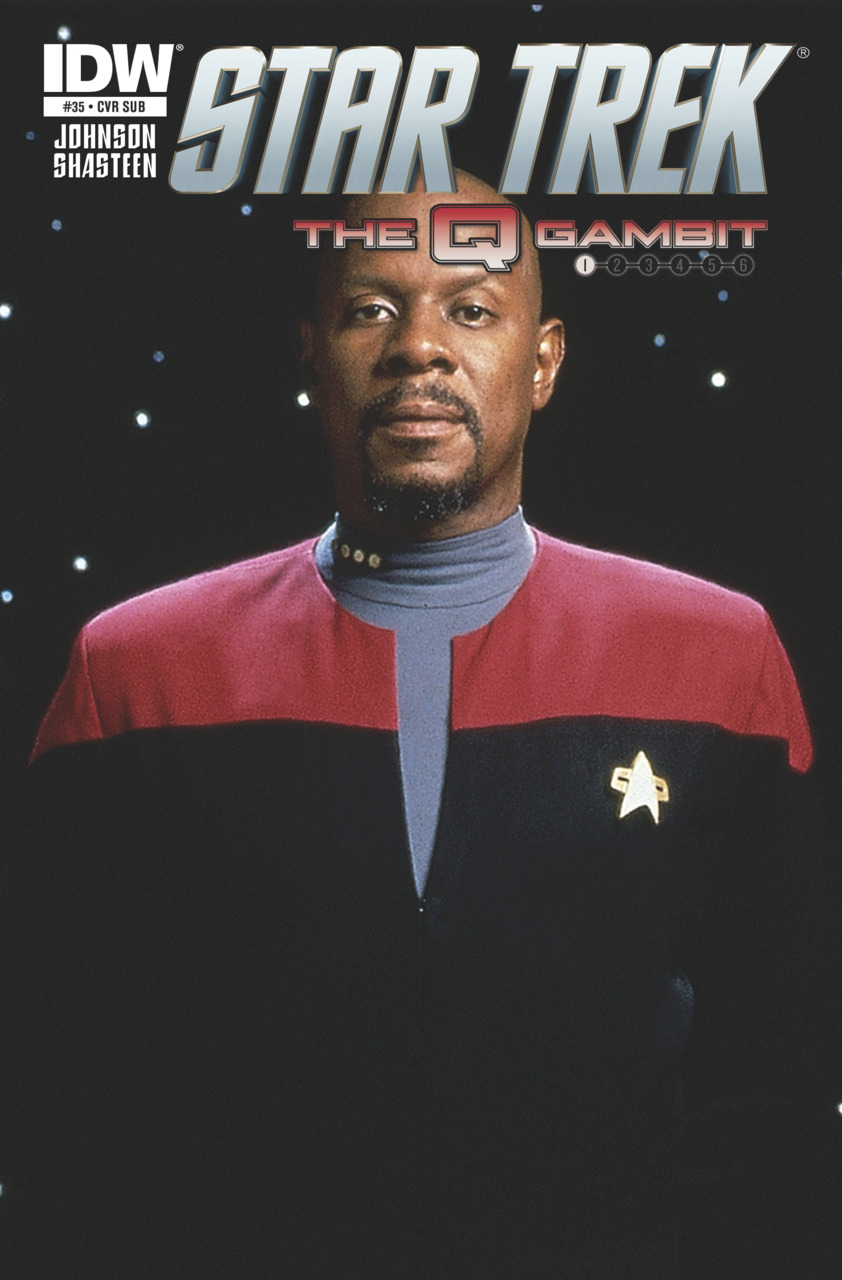Comic book editor and writer Kim Eggleston is relatively new to the industry. With a solid background in journalism, Eggleston has been involved in the comic book creation and publication process for two years. Her editing credits include “Last Breath” and “Boonana Tail Halloween Special.” Often working with her husband, Eggleston shares creator credit with him on “Dead By Wednesday #1,” fully funded on Kickstarter.
As a writer learning about the world of comics and comic book creation, I’m especially interested in Eggleston’s experiences in the industry (she has a background in journalism).
Tara M. Clapper: How did you find your way into comic book creation versus other forms of illustration or writing? Did you read comics and graphic novels when you were young?
Kim Eggleston: I did read some comics as a kid and young adult, but I was more into devouring all the YA, sci-fi, fantasy and horror fiction I could find then. I remember in middle school my parents gave my sister and me “Maus” by Art Spiegelman, and that was my first real experience with what a comic could be. Later, I read “Sandman” by Neil Gaiman at my local public library and was enthralled.
Still, I didn’t consider making my own comics until my husband [Sam Eggleston] began editing and writing comics quite recently. We’re both writers and editors full-time to begin with, and often help each other with editing. So when he began crafting his first comic book, he asked me to edit, and together we’ve been learning a lot about the industry and how to translate our skills into a new art form.
TMC: When did you first realize that most comic book creators aren’t women? Did it bother you? If so, how did you overcome it?
KE: I come from an industry — journalism — that is not always incredibly welcoming to women to begin with. But, I was still used to having a pretty equal gender split among my coworkers.
I honestly didn’t realize how few women are working in comics until after our first project, a one-shot called “Last Breath.” It was time to start promoting, marketing and taking it to conventions, and as I learned more about the comics scene and got deeper into it, I began to realize how hard it was to find other women doing the same thing. That did bother me, and I’m interested in the reasons why that is.
At the same time, most male creators I’ve met, and all those I’ve worked with, have been super supportive, so I didn’t have much to personally overcome. I think the time is ripe for women to dive in and create their own comics — the industry is ready for it.
TMC: Have you encountered a lot of sexism regarding women creating comics as well as female characters? If so, where do you find them – at conventions, online etc?
KE: I’ve encountered probably a slightly higher level of sexism directed at women in the comics field versus everywhere else in my experience. Which is to say, there’s the ordinary, everyday sexism in the background, and then there’s stuff that is specific to conventions or the Internet.
Like being mistaken for a “booth babe” at a con table instead of a creator. Or, being praised for venturing into sci-fi territory with a comic because usually women are interested in anime or manga-styled comics. I’m sure that person was trying to be complimentary, but it came off as weirdly sexist.
And I think that’s a battle we are continuing to fight; educating other creators on some of these sexist attitudes or stereotypes that haven’t yet been completely destroyed.
I think online is probably the least safe space for women in comics, as it is for women in all geekdom. At conventions, for the most part, my experience has been good and the support from other creators has far outweighed any ridiculous comments from passersby. In person and in the working and creative world, I would say those I’ve worked with have been awesome and welcoming and not approached me with any sexist attitudes.
Female characters is almost a whole other discussion. Since my husband and I both have mainly written female-led books, we’ve definitely encountered some knee-jerk responses to our female characters. I think the comics readers of the world might be a little behind the comics creators of the world in regards to sexism, at least in my experience.
But, that’s changing fast, too. The numbers of women reading comics is shooting up pretty quickly, and I think readers are demanding more equal treatment of female characters, and better stories featuring them. Lots of creators, both men and women, are responding to that call with great creativity — these are stories that people always wanted to tell, but they were seen as not marketable enough until now.
TMC: What’s the most effective way to combat sexism in a male-dominated field?
KE: It’s a tough nut to crack, because essentially what you’re doing is telling people that their thinking is wrong. And if people get offended by that, they get even more resistant to change and start vilifying the person who is telling them this instead.
That can be exhausting to the women in the field who, just like the men, really want to focus on making great comics. Hopefully, those who are being told their thinking is sexist can let go of their own hurt feelings and critically examine themselves, but right now, the burden is very much on the women — and men; there are some amazing feminist allies in comics — who are willing to confront each occurrence of sexism.
TMC: How have things changed since you started making comics?
KE: I’m probably not a great person to ask this, cause I just started! I haven’t seen any sea change in the industry in the two years I’ve been involved in comics, though.
TMC: What is your advice for anyone wanting to get a start in comic book creation?
KE: Just go out there and do it! Two things to know about the comics field: it is small, with fierce competition; and at the same time, the bar for entry is quite low. If you have the skills and determination to make a comic, no one will stop you because, for instance, you don’t have the right background or education, or because you can’t afford some expensive gear. It’s a wildly creative field with a ton of possibilities, and all those who create are welcome. It might require a lot of self-education; that’s what Sam and I have been doing these past few years. But if you’re willing to put in the time and probably some of your own money, you can absolutely get your own comics out there.
TMC: Do you make comics as a full-time job, or part-time? What are realistic expectations for people in the field?
KE: It’s only part-time for me. I mentioned before I’m a full-time writer and editor, and that means freelance. So, that does allow me to be more flexible with my schedule than the average person with a 9-to-5. But there are plenty of up-and-coming comics writers and artists who do hold down a regular job full-time, and do comics in their spare time, and for a lot of folks, that is probably realistic. Even those who work for the Big Two sometimes have other work on the side, and obviously, most of us don’t work for them.
TMC: What has been your biggest challenge as a comic book creator?
KE: The learning curve. It seems every time I think I know something about comics, I find out I have ten more things to learn related to that one. I love that, though. Learning something new every day is what originally drew me to journalism, and I’m doubly excited to learn more in such a creative field as comics.
TMC: It seems like comic book creators need to really be comfortable with knowing themselves when it comes time to produce their own work. Do you agree, and if so, were there any points in your career that made you realize this?
KE: Interesting question. I have never thought of it like this. I think at my age, which is about to be 33, I’ve already done a lot of work on knowing myself. So, that’s not something I typically think a lot about when creating comics. I have a certain amount of confidence in the characters I create, the stories I want to tell, and the techniques I use to write. But, I realize that makes me fortunate among people in general, and yes, knowing yourself and your own creative process and skills is a huge asset in any creative endeavor.
That said, sometimes you discover new things about yourself by simply creating, so I’d never call self-knowledge, a slippery, nebulous thing to start with, a prerequisite for comics creators.
TMC: Women are a quickly growing demographic when it comes to comic book readership and comic book movie viewership. Why now – and how do we keep the momentum going?
KE: I really think it’s just the evolution of our society. Girls in my generation — at least if you had 60s-liberal parents like I did — were told we could do anything, and all doors were open, and it was OK to like all those geeky and “boy” things. So, those of us who did, still do, and now we have the economic power on our side as we grow into our 30s, and the women in the next generation, those in their 20s and teens, have so many more examples to follow. And for those preteen and younger girls right now, there are even more doors open and more examples to follow. It’s a wonderful thing to see, and I don’t think the momentum will falter. I think it will only become stronger.
Maybe that’s a simplistic view, and I am aware there is pushback against the whole idea of women gaining a bigger piece of the comics consumer pie chart, but I’m optimistic enough to feel that the pushback is eventually doomed to fail.

